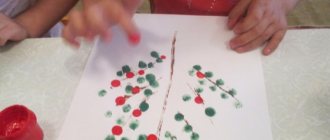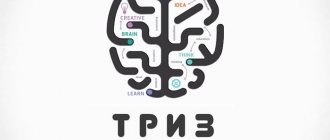Non-traditional approaches in physical education of preschool children
Non-traditional approaches in physical education of preschool children
In the last decade, there has been a trend towards deterioration in the health of the child population throughout the world. Environmental problems, various negative household factors, chemical additives in food, poor-quality water, accumulating irritations in society associated with an unsatisfactory economic situation are just some of the factors that aggressively affect the health of a preschooler. The well-being of society largely depends on the health of children.
Physical health is a fundamental condition for the spiritual and moral development of a person. In preschool age, the foundation of health is laid: the life systems and functions of the body mature and improve, its adaptive capabilities develop, its resistance to external influences increases, posture is formed, physical qualities and habits are acquired, and strong-willed character traits are developed, without which a healthy lifestyle is impossible.
Physical culture covers those aspects of life and education that are crucial for the normal physical development of a person’s motor sphere. Therefore, it is extremely important to properly organize work in this direction precisely in preschool age, which will allow the body to accumulate strength and ensure in the future not only full physical, but also diversified personality development.
Physical education as the main form of work in physical education has taken a strong place in preschool educational institutions, which solves a whole range of health-improving, educational and educational tasks.
At the same time, the development of the problem of development of preschool education based on an alternative organization of the educational process lags behind the needs of society and the educational system as a whole. The relevance of the problem of using alternative physical education classes of a non-traditional orientation, which take into account the characteristics of the motives and needs of older preschool children, becomes particularly acute for preschool educational institutions. A preschool institution, as the first link in continuous health-preserving education, involves the choice of alternative forms and methods of organizing the educational process to preserve and strengthen the health of children. The development of children is closely related to health: only a healthy child can develop correctly and fully.
Many teachers are creative in organizing physical education classes, coming up with interesting forms of conducting them, content, methods and techniques, thereby ensuring the formation of a strong, sustainable interest in physical education in children and the need to engage in it. But at the same time, not all preschool educational institutions fully solve these problems: they take a formal approach to conducting physical education classes, and mainly use traditional classes. Therefore, physical education classes are dry, monotonous, and as a result of this, there is a lack of interest, desire to engage in physical education, and poor physical development and health. Hence the need arises to change the forms of conducting physical education classes to non-traditional ones.
Psychotherapeutic games, non-traditional methods of working with children in kindergarten “I AM A DOCTOR”
The “Doctor” treats a patient with passes over his head, stroking, and sympathy. The “Doctor” with firm conviction orders the authorities:
- My dear heart, work well, rhythmically, be kind.
- Blood, be clean, healthy, wash all the vessels of the body.
- Tummy, be soft, my intestines work exactly at the right time.
Children sit in the “fakir” pose, relax, and have a glass of warm boiled water in front of them.
Make passes over the glass with your hands (inhale freely, while exhaling, slowly pronounce “aum” in a high voice). One hand is raised up, the other is pumped over the glass and what the child’s imagination imagines, then the words are pronounced as you exhale:
“The water is clean, healthy, I will always be healthy and cheerful and beautiful.”
Children gargle with this charged water, and if there is a tendency to diathesis, you can wipe the sore spots with a napkin.
Gradually, the water temperature can be lowered, which promotes hardening. The sound “aum” is pronounced freely, without holding the breath, as the child’s imagination suggests, in order to feel pleasure from the melodiousness of vowel sounds. GUIDELINES.
One of the ways to optimally develop a healthy child is to ensure his psychological safety. Psychotherapeutic games will help create conditions of mental comfort (when the environment has a developmental rather than a traumatic effect on the child).
Psychotherapeutic games are games aimed at healing the soul. Such games are conducted by a teacher with a subgroup of children or individually in a well-ventilated room. If necessary, games are accompanied by melodic, rhythmic, quiet music at a slow or medium tempo.
These games have a beneficial effect on the child’s psyche, as they calm and relax, leaving a pleasant feeling. With the help of these games, a child can release emotional stress in his sleep.
Games stabilize your emotional state and help you gain self-confidence. They develop the ability to manage their body, cultivate a caring attitude toward it, and a desire to be healthy.
Games serve to create a friendly atmosphere, an atmosphere of love and joy in the group.
Psychotherapeutic games generate joy, freedom, peace in yourself and around you.
In addition, the cheerful mood received from participating in games contributes to proper breathing, blood circulation, digestion and recovery processes in the body.
“FEATHERS” Purpose: -
prevention of spinal curvature,
-
development of the ability to control your body.
Progress of the game:
Educator: “The game “Feathers” will help your spine be healthy. Imagine yourself as light and airy, like feathers.” (The teacher shows how, while standing, without lifting your feet from the floor, pull your spine up as high as possible, while trying to lift your body off the floor). “To do this: stand strictly, touching both feet to the floor, pull your spine up as high as possible.” (The teacher shows, the children repeat).
“So, let's start. Wind started to blow. The feathers fly up (children stretch their spine). The wind has died down, the feathers have returned to the ground (the spine returns to its original position). Our spine is healthy!” (repeat 5 times). “BIRDS”
Goal: -
develop the ability to visualize;
-
create a feeling of lightness from the flight,
-
direct attention to certain areas of the body,
-
cultivate love for your body.
Progress of the game:
Educator: “Imagine that you are beautiful big white birds.
So you took off, spread your wings and flew high into the blue, blue sky. You fly towards the wind, proudly spreading your strong “Pinocchio” Purpose of the game: -
therapeutic effect for the cervical region.
Progress of the game:
We sculpt a beautiful nose for Pinocchio.
Pinocchio draws “sun”, “carrot”, “house” with his nose.
At the same time, children develop a joyful feeling from slow and smooth movements of the neck.
“ROCK THE BABY”
While sitting, press your foot to your chest, rock the “baby,” touch your forehead to your knee and foot.
Raise the “baby” above the head and make rotational movements around the face.
This exercise develops the flexibility of the leg joints and gives a feeling of joy from the harmonious movement of the legs. “GRAIN”
Purpose of the game: -
develop the ability to visualize;
-
develop the ability to relax the muscles of the body.
Progress of the game:
The child curled up, shrank, but the sun warmed up, the rain began to pour, the “seed” yawns widely, begins to move with pleasure, and then slowly stretches its legs - roots and arms - sprouts and begins to turn, rising towards the sun.
A cold, strong wind blew and the children huddled together.
The sun is out, you can sunbathe.
The children are relaxed, fanning themselves with handkerchiefs. (2 – 3 times). “BALL” Purpose of the game: -
develop the ability to tense and relax the muscles of the arms, legs, neck, face.
Progress of the game:
One child imitates the operation of a pump with sound accompaniment.
The rest of the children imagine themselves as balloons that are inflated with air, gradually raising their arms up, puffing out their cheeks.
Tension in the arms, legs, neck and face muscles reaches the limit.
The ball burst. And the children slowly relax their muscles and, in a relaxed state, slowly sink to the floor. “Humpty - Baltai”
Purpose of the game: -
develop the ability to relax the muscles of the torso.
How to play:
Children stand in a relaxed state, arms hanging freely. The children make turns to the text, their arms dangling freely, like a rag doll.
Humpty - humpty sits on the wall,
Humpty - Humpty fell in his sleep.
Children fall to the floor in a relaxed state.
wings.
Each feather is blown through by a warm, gentle wind, and along with the wind all your failures, troubles and illnesses are carried away, and the body is saturated with the healing power of Air.” (Children stand on the floor with their arms spread out to the sides, imagining themselves as birds). In conclusion, the teacher says with the children: “We are beautiful, strong and healthy!” “COMPLIMENTS” The purpose of the game: -
learn to give compliments to others, activate your vocabulary,
-
create a favorable environment in the group.
Progress of the game:
Educator: “Our guest is a girl from an older group.
I suggest you play with it. We will give our guest compliments. If she likes our compliments, she will invite us to visit her group.” “BEAUTY WINDERS” The purpose of the game: -
to enrich children’s vocabulary,
-
to teach them to see beauty in their surroundings,
-
to create an atmosphere of kindness, joy and beauty in the group.
Progress of the game:
The teacher invites the children to examine and characterize any object (girl, doll, flower, painting).
Children name words that describe the beauty of an object. For each named word you get a candy wrapper. “DANCED FIGURES” The purpose of the game: -
to develop the ability to visualize,
-
to learn to relax and tense your body, to relieve nervous and muscle tension,
-
to learn to control your body,
-
to develop a feeling of joy from the harmonious movement of the body.
Progress of the game:
Educator: “I invite you to the ball. But what to do if the musicians’ instruments are broken? How will we dance? And it's very simple! Imagine your favorite melody playing... Dance to it.”
At the teacher’s command: “Spin to the rhythm of the dance!” (Children perform free dance movements to an imaginary melody.)
At the teacher’s command: “Now stop!”
(Children freeze in their chosen dance figure). “SMILE, MAKE FRIENDS!” The purpose of the game: -
to develop the ability to use words of greeting and gratitude, the ability to overcome shyness and constraint,
-
to cultivate the need for friendly communication,
-
to create a favorable emotional environment in the group.
-
increased range of motion in the joints of the fingers and hands;
-
exchange of internal energy, establishment of warm interpersonal relationships.
Progress of the game:
Children, if desired, choose a pair for themselves and stand against each other. They hit their palms, then the palms of their partner. Next, after hitting the palm, alternate clapping with the right and left hands follows. At the same time, both partners say:
Clap, clap, harder
And warm your palms.
Left, right, and then...
Share your warmth.
The palm game continues with the accompaniment of the children's rhyme “Horses, horses, sitting on the balcony...” or any other. “FUNNY BEE”
Purpose of the game: -
to teach children to direct their breath and attention to a certain area of the body.
Progress of the game:
Inhale freely, as you exhale the sound “Z-zz-zz”.
Imagine that a bee landed on your nose, arm, or leg. “COLD - HOT” Purpose of the game: -
develop the ability to tense and relax the muscles of the body.
Progress of the game:
children pay attention to how the tree becomes thicker and more magnificent.
Everyone reads the inscription on the leaves together and repeats the kind words. “HARMLESS STREET” The purpose of the game: -
to teach you to forget grievances and forgive offenders,
-
to throw off negative energy,
-
to develop the ability to visualize.
Progress of the game:
The teacher invites the children to take a comfortable position on the carpet. He says: “Now we will learn to let go of our grievances so that they do not prevent us from being healthy. Imagine a clear, ringing stream, and your grievances are stones. Throw these stones into the stream, free yourself from your grievances, and the stream will carry them far, far away.”
During the game, the teacher creates a sound tone: first, the cheerful murmur of a stream sounds, then a heavier one (the stream is full of insults - stones), then again the cheerful and light sound of an already “harmless” stream. “CRYSTAL CLOUD”
The purpose of the game: -
to teach using visualization to replenish your “Vessel of Self-Healing” with pure energy,
-
to develop the ability to feel your energy,
-
to cultivate love for your body, the desire to be healthy.
Progress of the game:
The teacher shows the children in which part of the body the “Vessel of Self-Healing” is located, explains that it must be constantly replenished with clean energy.
He says: “Imagine a clear blue sky with light white, crystal clouds floating across it. Choose the cloud that you like best. Breathe in its ringing, clean air, let the cloud into your tummy.” “MIRROR” The purpose of the game: -
to help children open up, feel more free and relaxed, see themselves as if from the outside;
-
develop the ability to evaluate not only your appearance, but also your actions;
-
learn to think positively about yourself, to love yourself.
Progress of the game:
The teacher suggests going to the mirror, looking into the eyes of your reflection and, mentioning your name, saying the words: “I am strong and courageous...”, “I am kind and fair...”, “I can...”, etc.
Finish working with the mirror with the words: “Love is everywhere in the world, but I love and are loved!” “GAME OF PLEASANT FANTASIES” The purpose of the game: -
to teach children to tune in to pleasant, beautiful fantasies through visualization, to let go of moments of failures and troubles from their memory, to replace them with memories of successes.
Progress of the game:
The teacher invites the children to think about something pleasant, imagine the most pleasant scenes: “Merry Circus”, “Toy Store”, “Birthday”, etc.
Sit in silence for a while, then share your pleasant pictures and impressions. The teacher suggests answering the question: “Which of your friends and relatives would you take into your pleasant fantasy?” “SUN OF HEALTH” Purpose of the game: -
develop the ability to visualize;
—
cultivate love for your body, the desire to be healthy.
Progress of the game:
The teacher invites the children to imagine that any of their troubles, failures or illnesses are an icicle.
“You are holding this icicle in your hands. This makes you feel cold and unpleasant. But then the sun came out. You feel warmer. From the warm and gentle sun, your icicle begins to melt, turn into water and drip onto the floor. And so, you felt warm and pleasant, but all that was left of your icicle (trouble, failure, illness) was a puddle on the floor. Dry it with a rag. Well done! Now you feel good and happy. You are safe. You are healthy!" “WARM PALM” Purpose of the game: -
development of reaction speed;
How to play:
Children line up in a circle and hold hands.
Each child turns his head to the partner standing next to him, looks him straight in the eyes and says: “Smile, make friends.” The game ends when all the children make this request to each other. “THE TREE OF GOOD WORDS” The purpose of the game: -
to enrich children’s vocabulary,
-
to teach them to see the good and the best in others,
-
to create an emotionally favorable environment in the group.
Progress of the game:
The teacher shows the children a tree made of paper and cardboard. He reports that this is a “tree of kind words,” but it has no leaves at all.
“Every leaf is a kind word, let’s help the leaves bloom. We will speak kind words to you, and leaves will appear on the tree.”
Then the teacher chooses a child and all the positive qualities are expressed about him.
The teacher writes down the named words on specially prepared pieces of paper and places them on the tree. The game continues over the following days. Children can describe each other, acquaintances, etc. If new kind words are named, new leaves will appear on the tree. From time to time, the teacher, together with the children, examines the “tree of kind words”, draws






